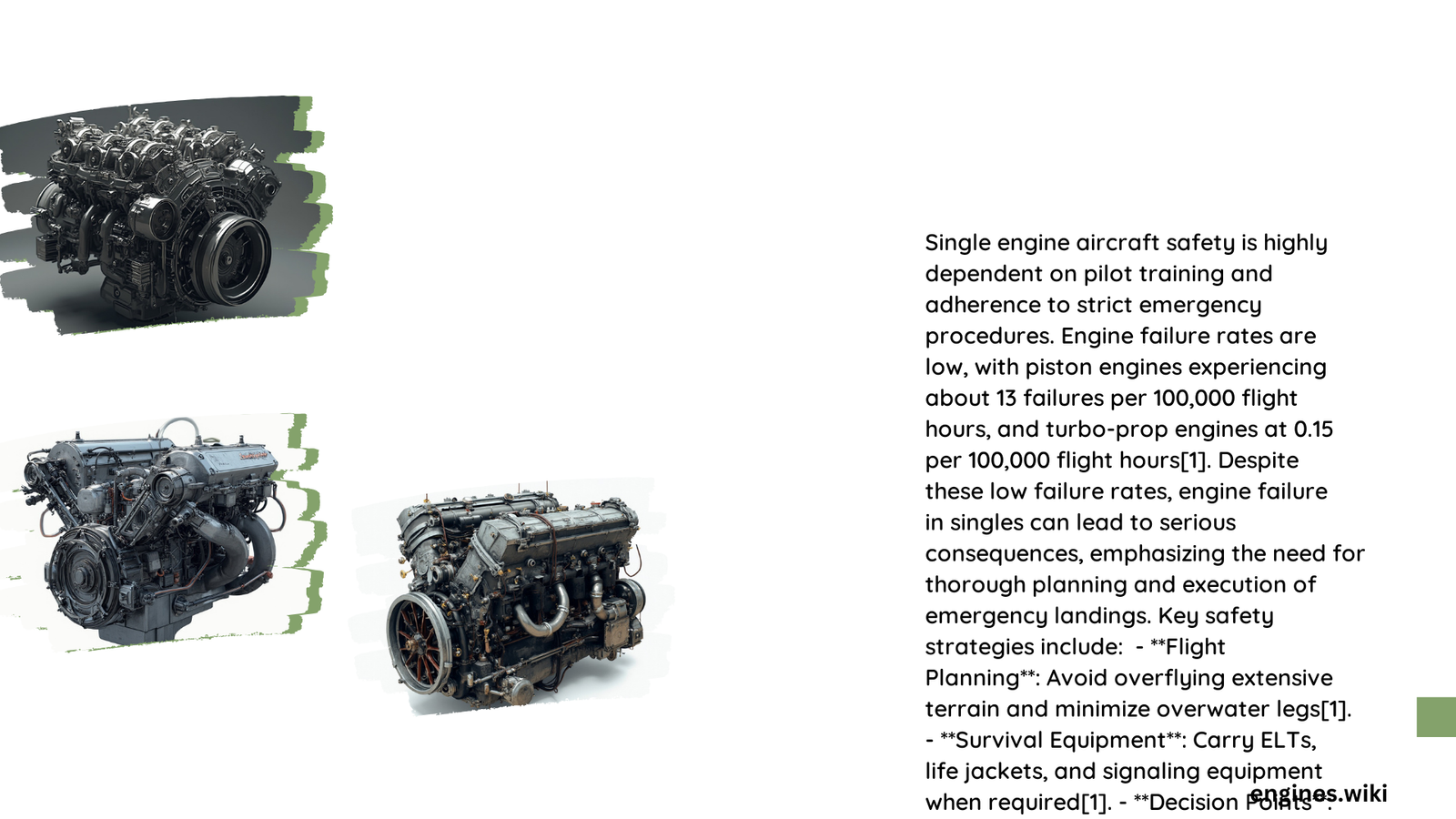Single engine aircraft safety represents a critical aspect of aviation where pilots must understand comprehensive risk management strategies, statistical trends, and emergency preparedness. Pilots operating single-engine aircraft face unique challenges that demand meticulous attention to technical details, environmental conditions, and personal skill development to minimize potential accidents and ensure optimal flight safety.\n\n## What Are the Primary Accident Risks in Single Engine Aircraft?\n\nSingle engine aircraft accidents are predominantly influenced by several key factors that pilots must comprehensively understand:\n\n### Accident Causation Breakdown\n\n| Risk Category | Percentage of Total Accidents |\n|————–|——————————-|\n| Pilot Error | 68-72% |\n| Mechanical Failure | 15-18% |\n| Weather Conditions | 10-12% |\n| Other Factors | 2-5% |\n\n### Critical Risk Areas\n\n1. Loss of Control Incidents\n – Most frequent accident type\n – Typically occurs during:\n * Takeoff\n * Climb phases\n * Complex maneuvers\n\n2. Stall and Spin Scenarios\n – Second most dangerous accident category\n – Often result from:\n * Improper angle of attack\n * Insufficient pilot training\n * Inadequate situational awareness\n\n### How Can Pilots Minimize Single Engine Aircraft Safety Risks?\n\nEffective risk mitigation requires a multi-dimensional approach focusing on several key areas:\n\n#### Comprehensive Pilot Training\n\nSuccessful single engine aircraft safety depends on rigorous training programs that emphasize:\n\n- Thorough understanding of aircraft systems\n- Advanced emergency procedure knowledge\n- Regular skill assessment and recurrent training\n- Instrument proficiency checks\n\n#### Proactive Maintenance Practices\n\nRegular aircraft maintenance plays a crucial role in preventing potential mechanical failures:\n\n- Conduct comprehensive pre-flight inspections\n- Follow manufacturer-recommended maintenance schedules\n- Document and address any mechanical anomalies immediately\n- Utilize professional maintenance services\n\n### What Emergency Procedures Should Pilots Master?\n\nEmergency preparedness is fundamental to single engine aircraft safety. Pilots must develop expertise in:\n\n1. Engine Failure Response\n – Immediate emergency declaration\n – Engine shutdown protocols\n – Glide path calculation\n – Emergency landing site selection\n\n2. Weather-Related Contingencies\n – Instrument flight rules (IFR) navigation\n – Recognizing and avoiding hazardous conditions\n – Alternate route planning\n\n### Technical Skill Development Strategies\n\nPilots can enhance single engine aircraft safety through:\n\n- Advanced simulator training\n- Scenario-based learning environments\n- Continuous education programs\n- Peer knowledge exchange platforms\n\n## Conclusion\n\nSingle engine aircraft safety demands a holistic approach combining technical knowledge, continuous learning, and proactive risk management. Pilots must remain committed to personal skill development and maintain a comprehensive understanding of potential challenges.\n\n### Reference:\n- AOPA Accident Reports\n- FAA Pilot Resources\n- National Transportation Safety Board

